Recently, I took a behind-the-scenes, lights-on tour of Dollywood’s Blazing Fury indoor roller coaster. Walking the track of this quirky ride has been near the top of my roller-coaster bucket list ever since I first rode it in 2001.
Warning: spoilers ahead! If you haven’t ridden Blazing Fury, you may want to turn back now.
First, a little history:
Turning 40 years old this year, Blazing Fury was Dollywood’s first roller coaster. It opened in 1978 before the park was known as Dollywood, which was then known as Silver Dollar City. It was the park’s only coaster until the Thunder Express mine train opened in 1989 (it closed in 1998 to make room for Tennessee Tornado).
Blazing Fury’s unassuming exterior blends seamlessly with the surrounding 19th-century architecture of the Craftsman’s Valley area.
The Dollywood website describes the ride’s backstory:
An out-of-control fire is just minutes away from engulfing this 1880s town, and chaos ensues as the town’s residents, a cast of characters ranging from firefighters to gunslingers and damsels in distress, hurry to escape the blaze. Riders scream through town on this indoor roller coaster, taking each hill and curve with great speed as they try to outrun the fire.
Blazing Fury’s overall aesthetic and thematic elements are a little campy — reminiscent of dark rides of yesteryear. They don’t make rides like this anymore. In fact, it was designed and built in-house by the park’s maintenance staff.
My guide was Barry Stiltner, Dollywood’s Director of Rides Maintenance. He’s worked at Dollywood for over 20 years, so he knows a thing or two about the ride.
We started our tour just outside of the station.
The first section of track after exiting the station is nicknamed “Frog Alley.” But the name is slightly misleading. There aren’t many frogs to see, except for one that was taken from the park’s former Dreamland Forest interactive play area that closed in 2o10.
I quickly realized that many of Blazing Fury’s animatronics are somewhat terrifying with the lights on. See Exhibit A above.
During the tour, I saw many props and small details that I’ve missed in my countless rides on Blazing Fury. Granted, it is normally much darker.
The ride is full of practical effects and handmade props.
The small details on the signs are easily missed, which is a shame because many of them are quite clever and funny.
The foodie in me has always been fond of this sign in particular.
There are several signs that honor Dollywood’s history and former attractions. This signpost features the previous names of the park: Rebel Railroad (1961-1969); Goldrush Junction (1970-1974); Goldrush (1975) and Silver Dollar City (1976-1985).
The former Flooded Mine dark ride (closed to make room for Daredevil Falls) also gets a shout-out.
The nod to the problematic Timber Tower has a more visible presence.
If you need a Timber Tower refresher:
Gone but not forgotten, thanks to Blazing Fury.
There are roughly 50 sensors along Blazing Fury’s 1,520 feet of track. These sensors, known as “limit switches,” serve one of two purposes. The first is to notify the coaster’s computer system of a train’s given location on the ride. The second is to trigger special effects.
The triggers act like spring-loaded light switches. The train “flips the switch” as it passes over it.
That’s why Molly’s always about to jump to safety just as the train passes by.
With the lights off, this blue string lighting mimics a stream of water.
At one time, there was an actual stream of water coming from the hose.
Again, many of the animatronics are very unnerving when the lights are on.
Instead of dividing the ride into numbered sections, Dollywood employees use nicknames like “Frog Alley” and other large set pieces to identify specific areas of the ride.
Fun fact: until recently, there was no horse in the horse stable.
The smaller details like the headstones are nearly impossible to spot as you pass them in the dark.
See the tallest stone for another reference to the Flooded Mine ride.
Shorty looks like he belongs in a haunted maze.
The ride uses many practical effects, such as a billowing silk sheet with LED lighting shining on it to create the illusion of a building engulfed in flames (see above).
Blazing Fury’s maintenance shop is located in the middle of the coaster’s layout, which is essentially a gradual spiraling incline.
There are two track switches that lead into the shop. One follows the first turn out of the station. The other is near the Flooded Mine tribute (see above).
The track snakes through the shop, allowing multiple trains to be stored inside if needed.
When the coaster first opened in 1978, it operated with five two-car trains. Barry told me that in the 21 years that he’s been working at Dollywood, Blazing Fury has run with three cars per train.
Blazing Fury can run three of four trains simultaneously. Running only three prevents the “stacking” of trains as they wait for the train ahead to leave the station.
Only the first two cars in each Blazing Fury train are powered. The third is an unpowered “trailer” pulled by the first two cars.
While Blazing Fury’s finale is indisputably all gravity driven, the portion that precedes it powered. Here’s how it works:
1. Power comes into the building from the electric company.
2. The power is then brought down to 230 volts.
3. As the power enters the track, the voltage drops again from 230 to 56 volts before entering the car’s motor, which is hidden from view.
4. From there, a transformer inside the train increases the voltage back up to 230. That voltage powers the train as it slowly ascends through the building.
Tire-like booster wheels were installed after the third cars were added to help propel the extra weight.
The train’s wheels consist of a coating of polyurethane bonded to an aluminum hub.
(Learn about the science behind coaster wheels here.)
As we continued our trek, the ride’s first drop came into view:
That first drop simulates a collapsing bridge — it’s a unique special effect, especially given the ride’s age.
The effect is made possible by a hydraulic “bridge” that falls in sync with the track thanks to two guide rails.
It’s a fairly ingenious effect for a ride built in 1978.
The drop is short — maybe 15 feet — but it offers a nice little pop of air to riders sitting in the back of the train.
The trains quickly level out after the “collapse.”
In the last eight years, the park has spent nearly $1 million on track and support repair and replacement.
Another fun fact: Lightning Rod wasn’t technically the first Rocky Mountain Construction (RMC) coaster at Dollywood. In 2015, the park solicited RMC’s experience with its I-beam-like I-Box track to rework Blazing Fury’s roller-coaster section, making the ride noticeably smoother and the transitions less jarring.
Over 30+ years, the “coaster” sections of track had received a fair amount of wear and tear.
In addition to replacing the track, RMC slightly reprofiled the track to make the transitions smoother.
Trains would occasionally “valley” at the bottom of drops, so this reworking of the track helped reduce the frequency of these.
So this counts as a new credit, right? (I kid, I kid.)
A recurring theme among several Dollywood coasters is the seemingly imminent threat of fire and/or explosions.
Now to address the elephant in the room: the water — or lack thereof.
If you rode Blazing Fury before 2011, one of the most memorable features of the ride was the splashdown finale.
Trains careened down this hill into a pool of water. This acted as a natural brake of sorts, slowing the trains as they reentered the station.
While it wasn’t a drenching splash, you wouldn’t leave the ride dry.
Over the years, the water caused wear and tear on not only the ride itself but the show scenes and other components inside the building. The park had two options: take out the water or take out the ride.
Barry admitted that the decision to remove the water from the ride was difficult. But had the water not been removed, the ride wouldn’t have lasted much longer.
In lieu of the water, magnetic brakes were installed to slow trains.
Although not visible here, blue lights now illuminate the cavernous room and a blast of compressed air is a not-so-subtle nod to the splash.
If you’re still longing for the splash, Blazing Fury’s sister coaster, Fire in the Hole at Silver Dollar City, still sends trains down into a pool of water.
And with that, we were back in the station. Even after all these years, I still leave Blazing Fury with a smile on my face. A Dollywood visit doesn’t feel complete without at least one ride on it.
After this tour, I have a greater appreciation for the ride. From the investment the park has made in its upkeep, I think it will be around to entertain guests for years to come.
We’d like to give special thanks to Barry for taking time out of his day to give us the tour and share his insight.
Do you have any Blazing Fury stories or trivia? Share them in the comments section below.

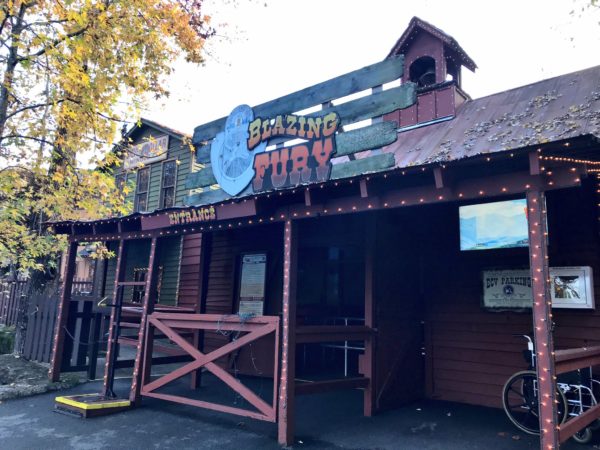
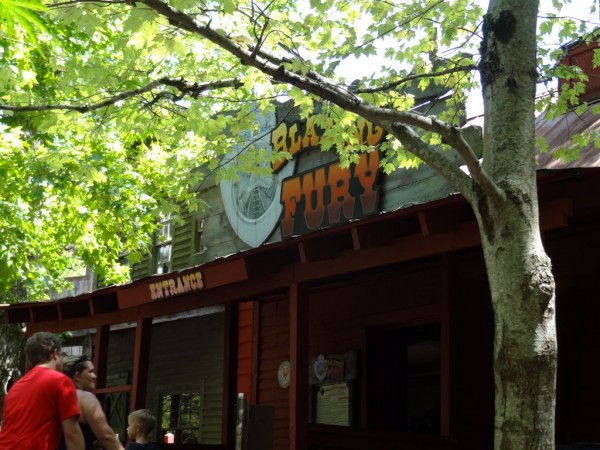
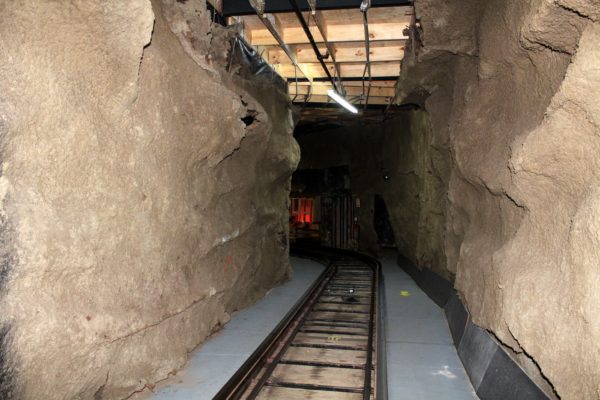
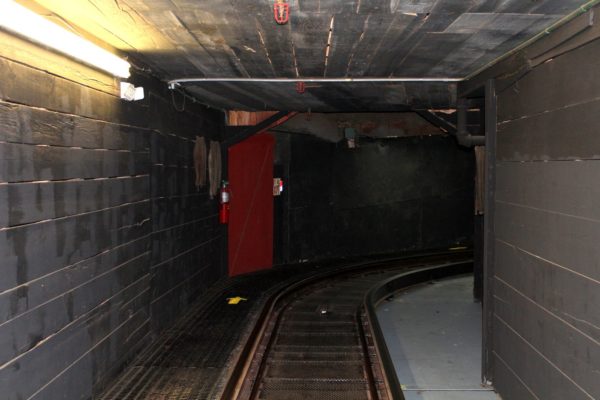
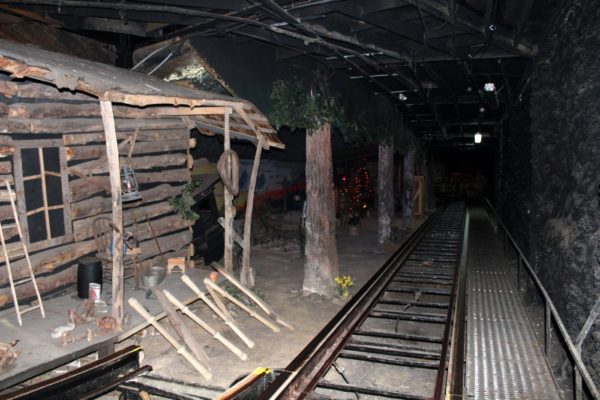
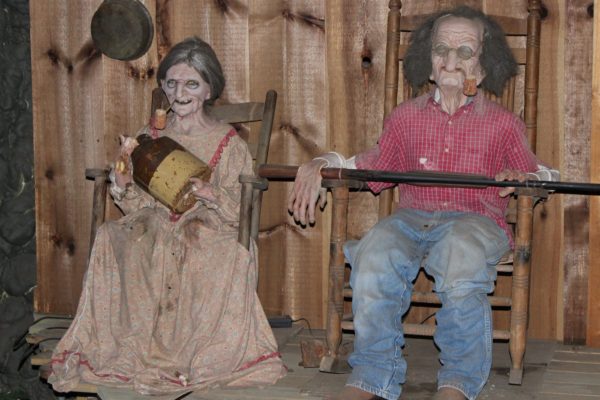
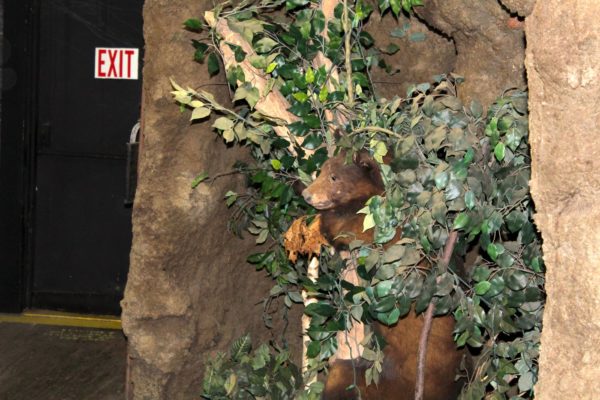
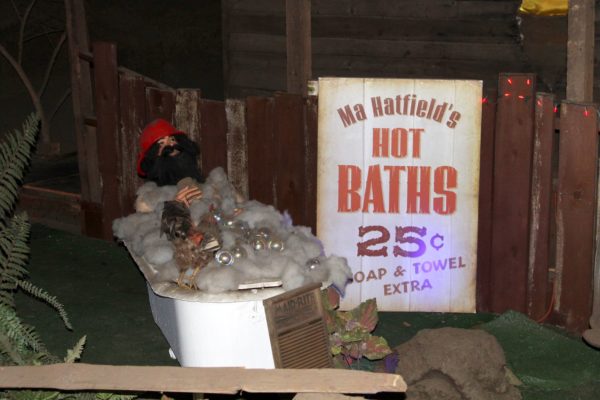
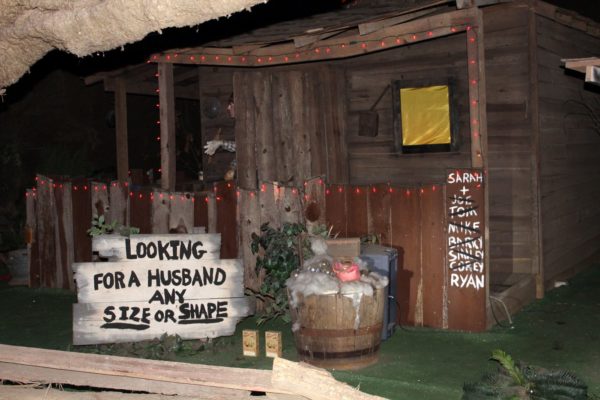
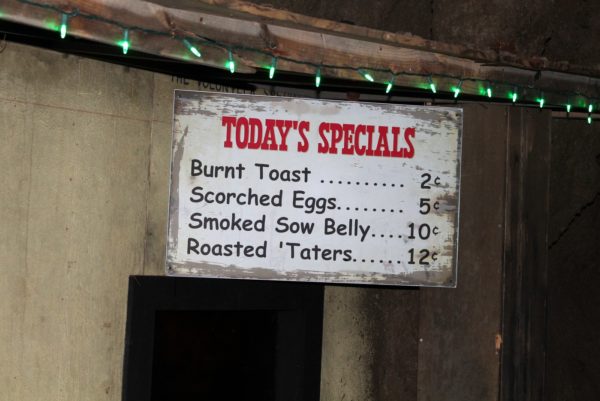
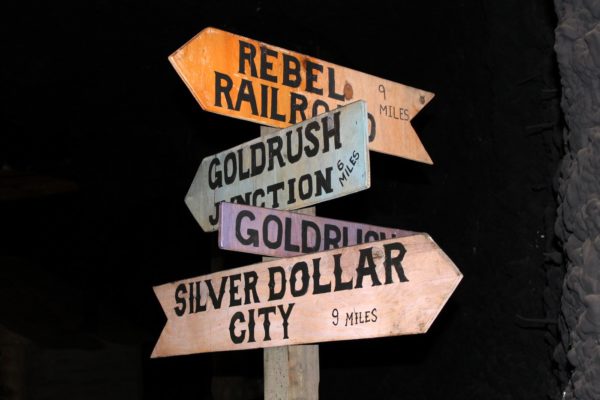
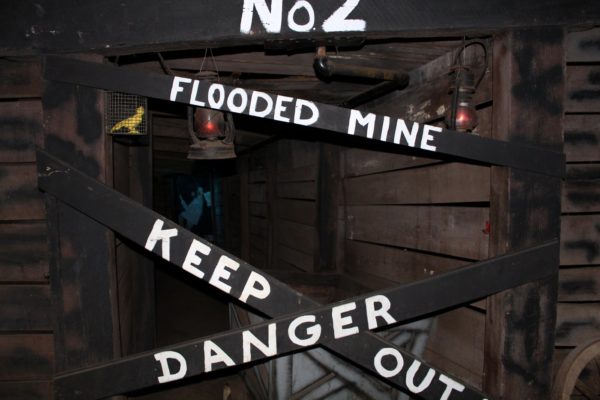
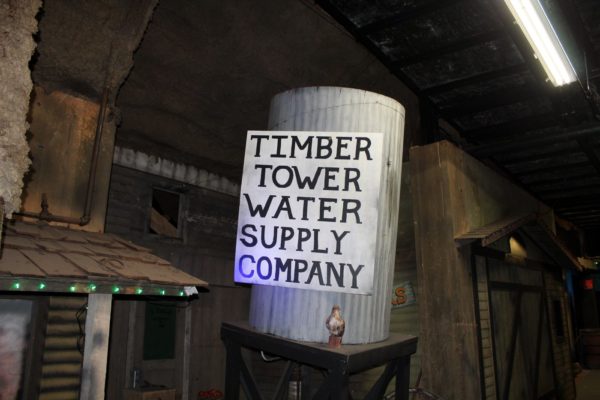
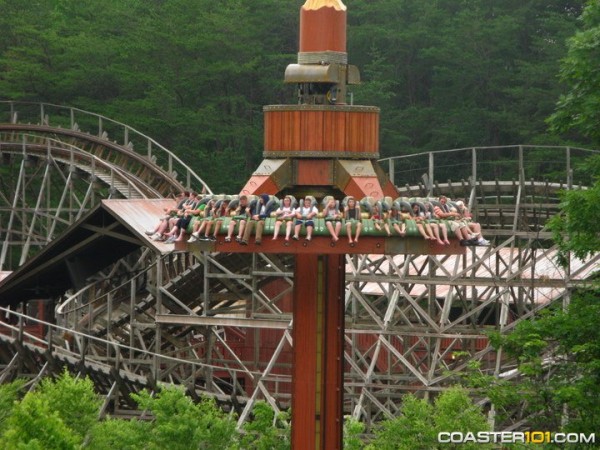
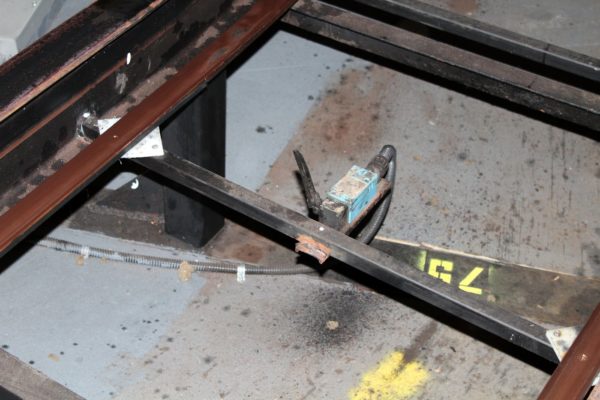
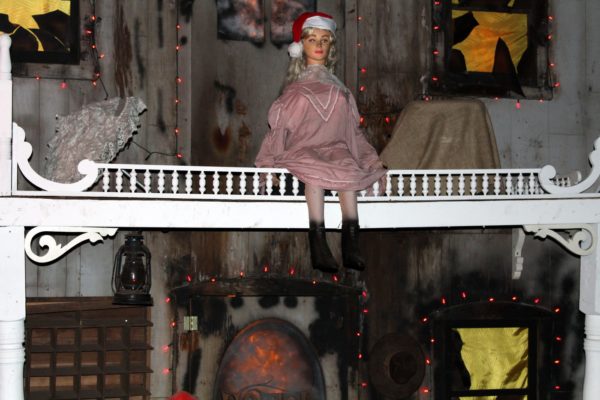
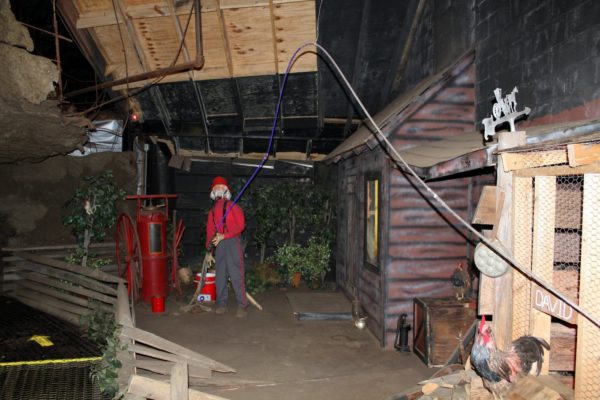
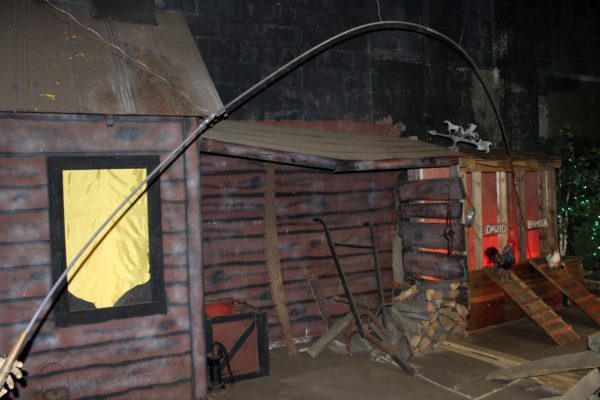
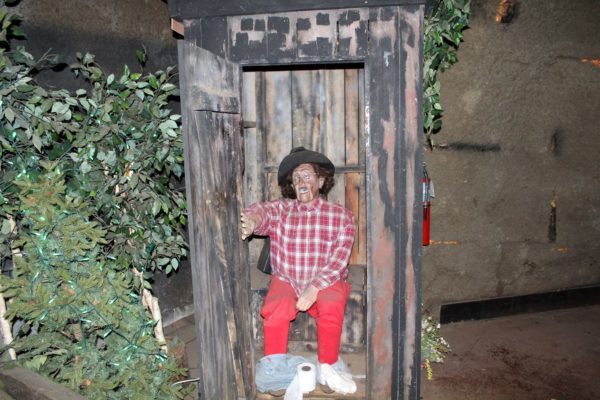
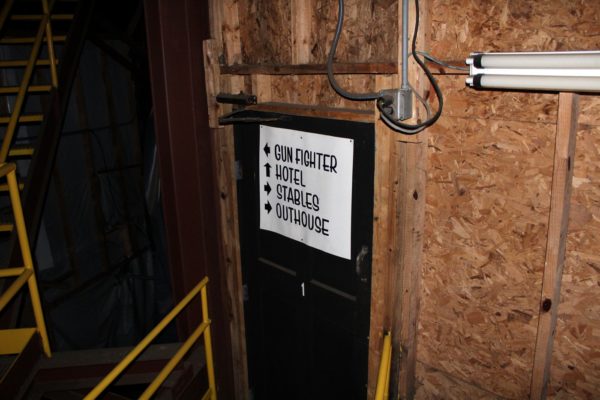
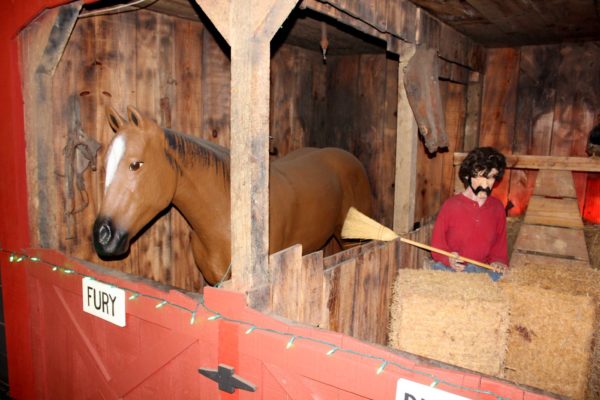
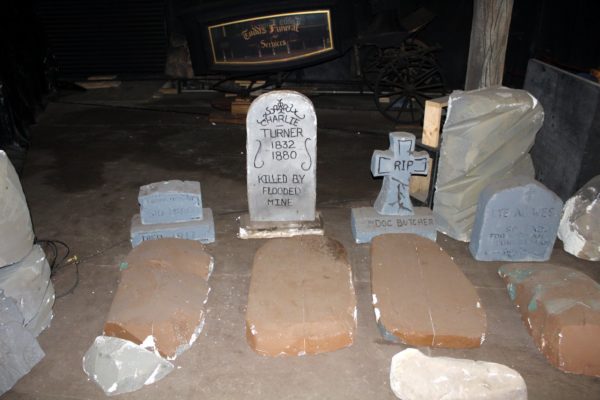
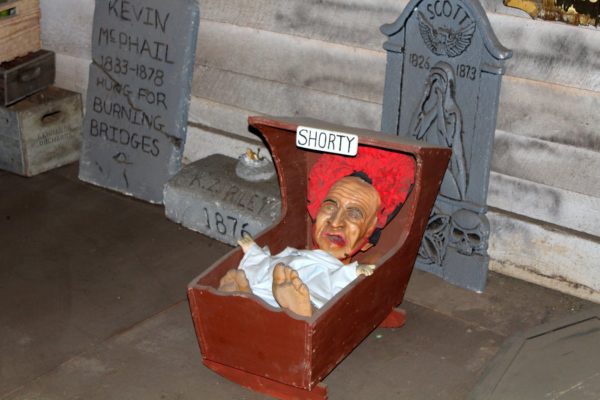
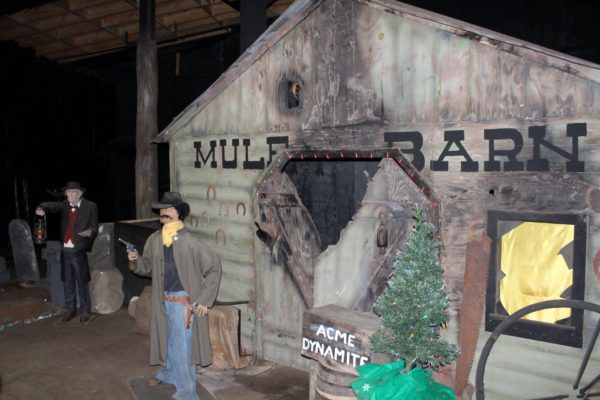
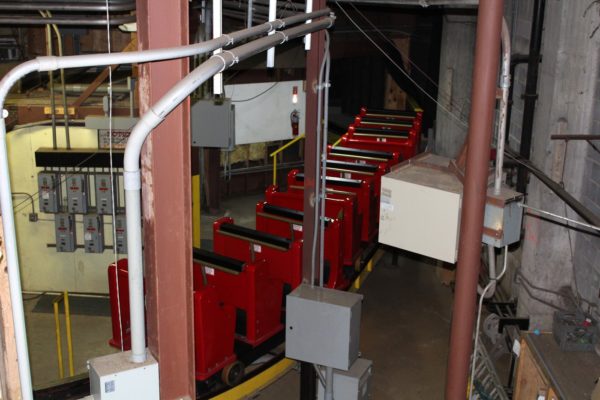
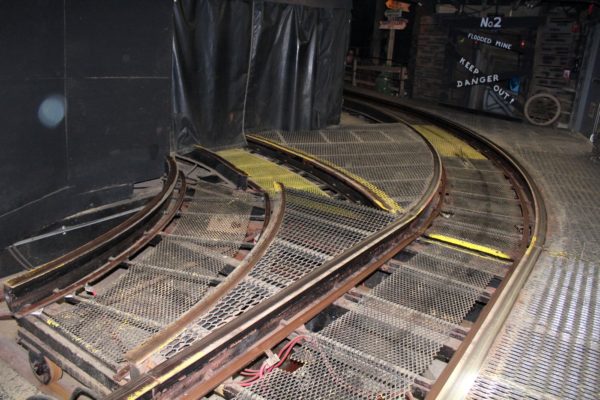
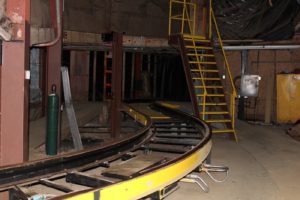
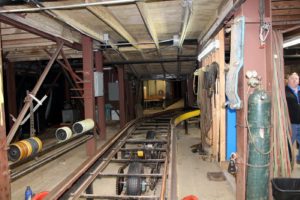
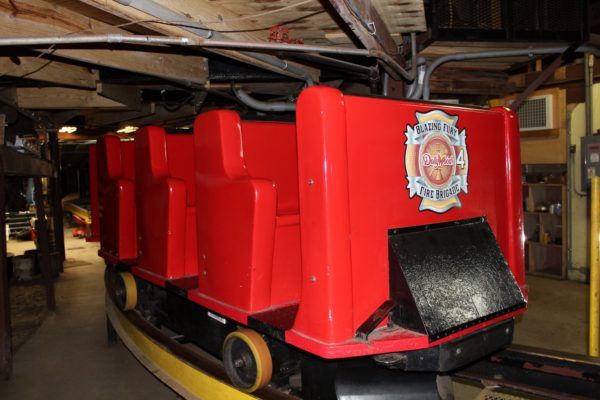
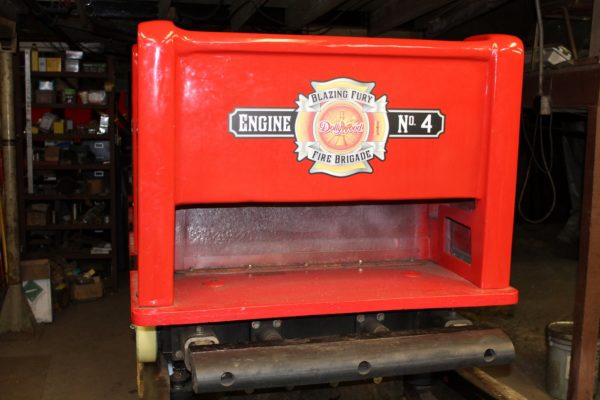
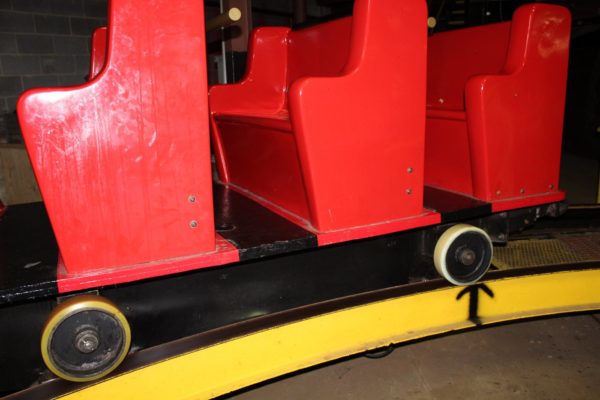
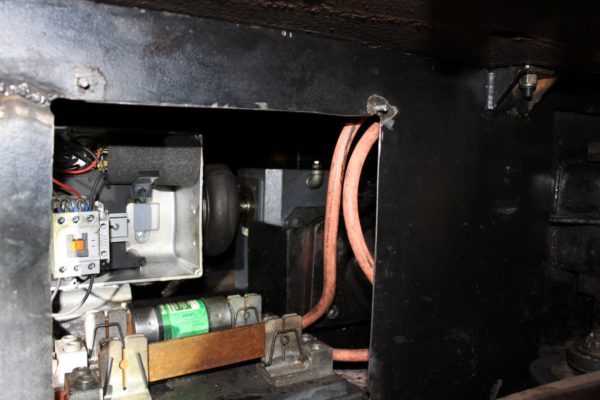
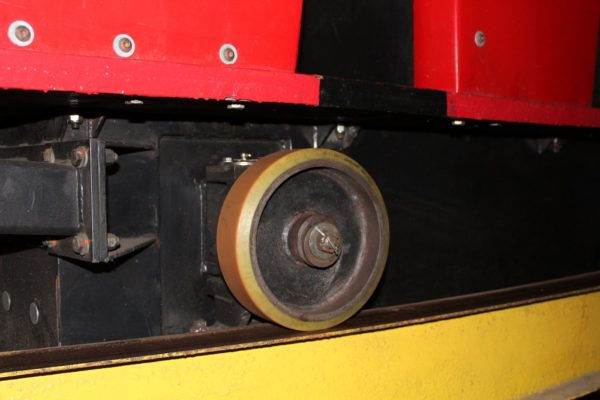
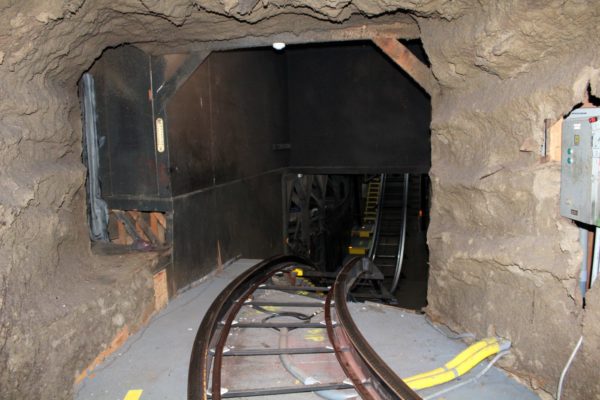
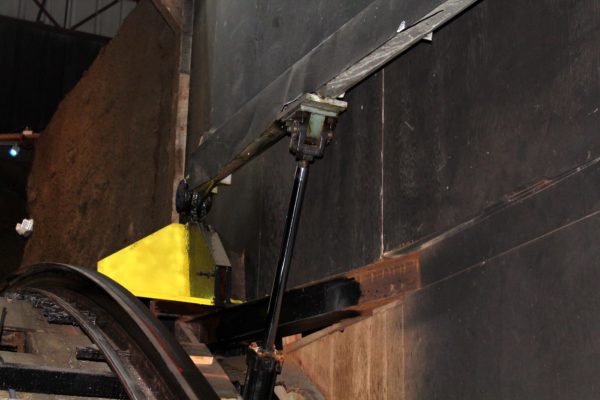
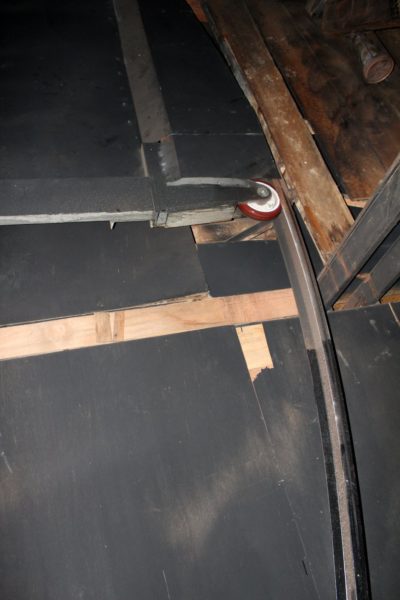
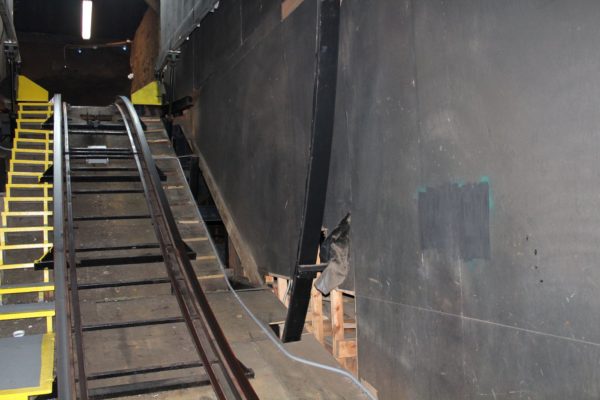
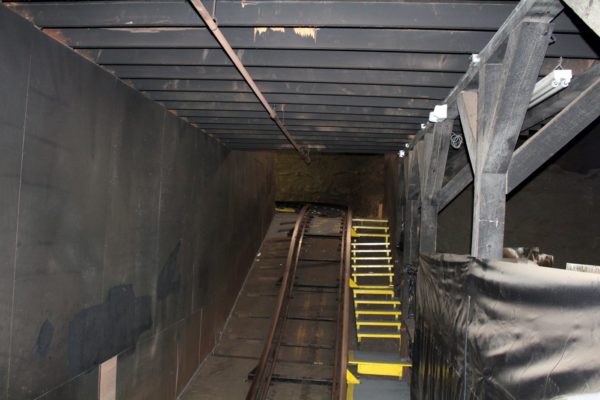
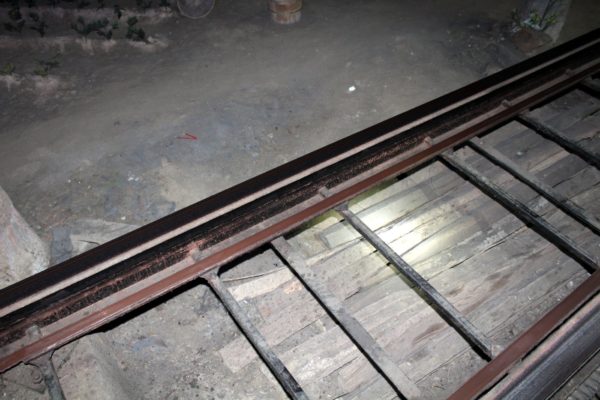
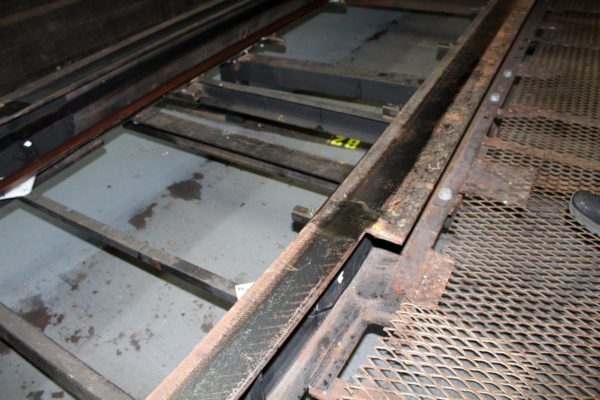
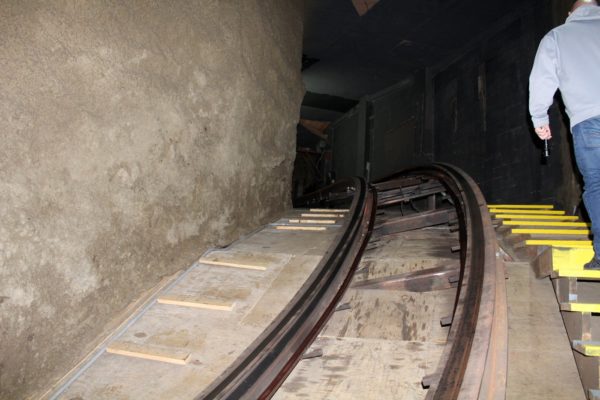
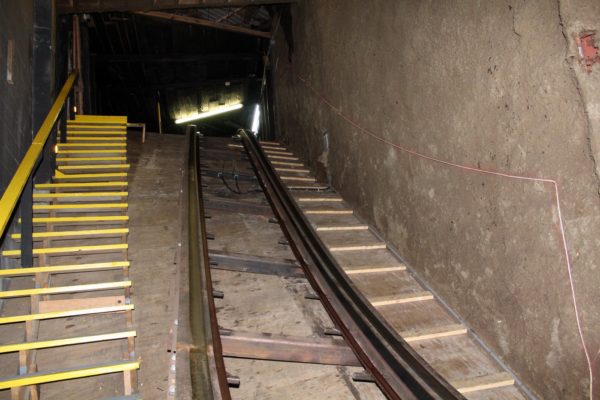
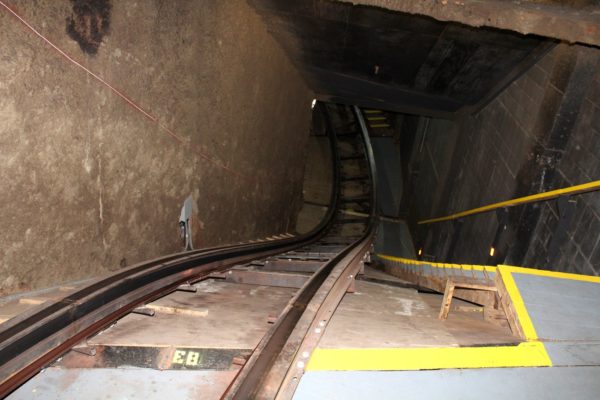
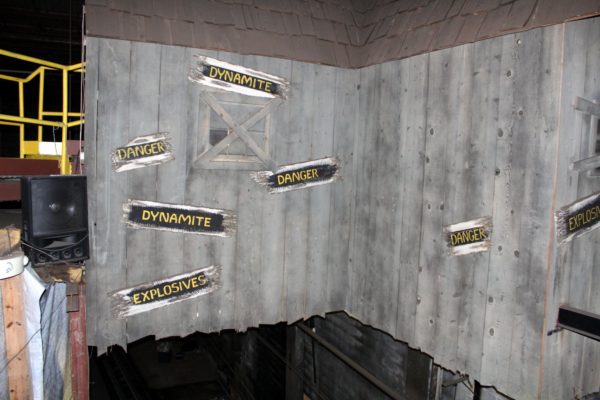
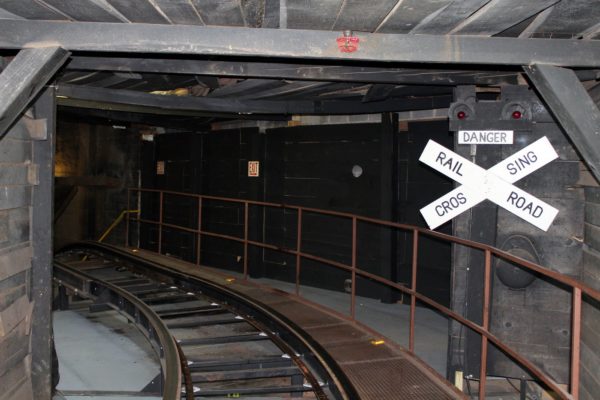
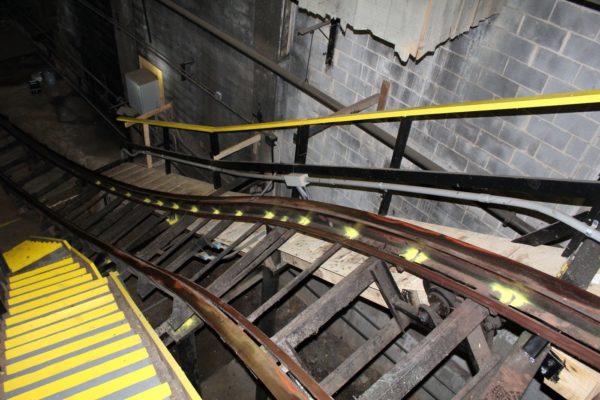
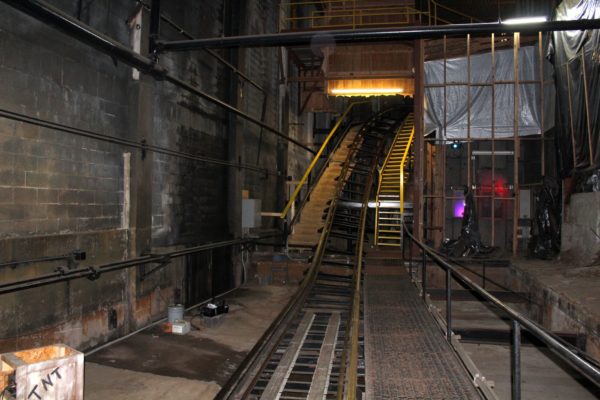
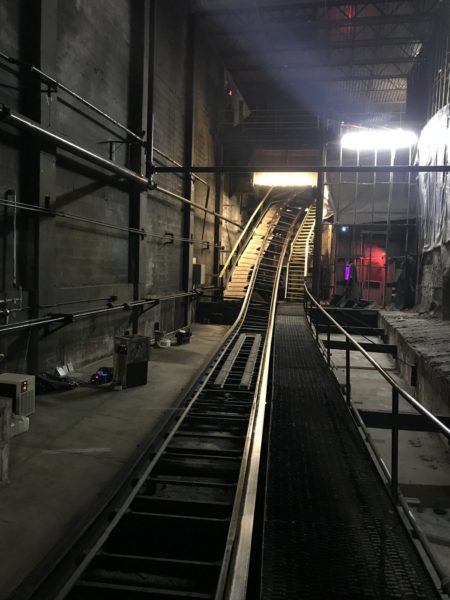
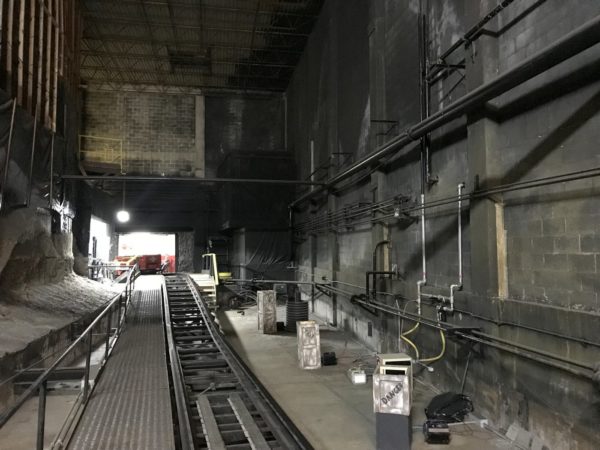
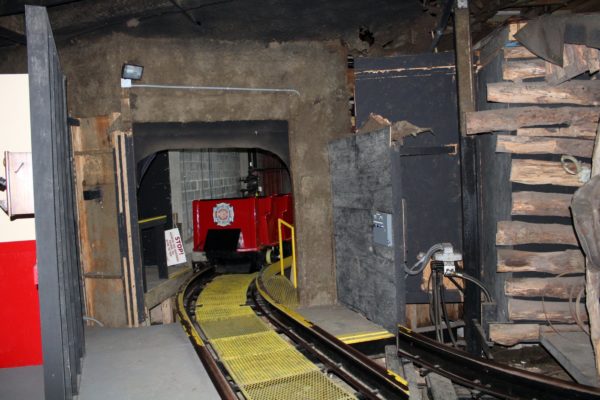
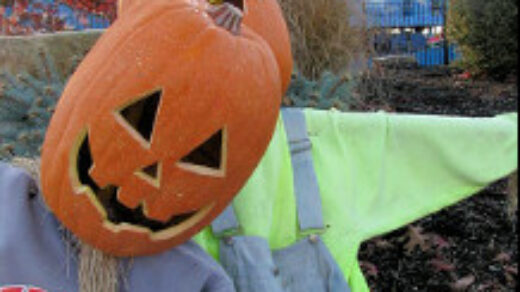
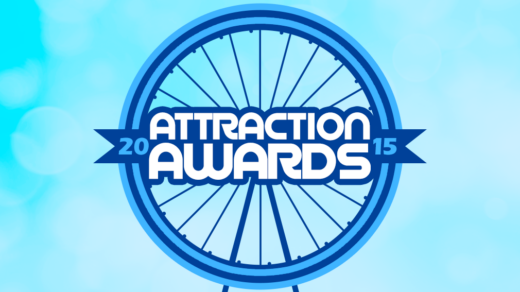
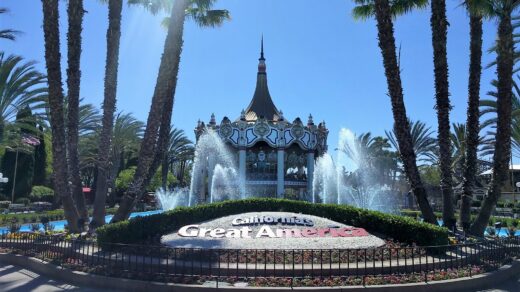



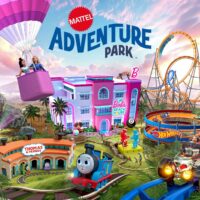
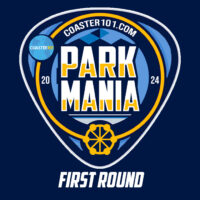



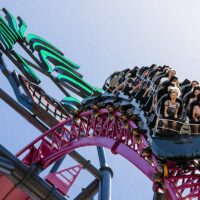
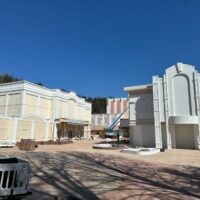
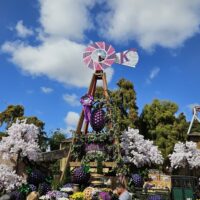
I have never understood what the guy in the horse stable with the broom is supposed to be doing???
My favorite ride along with dare devil falls,I ride these 2 over and over,along with river rampage
I love all of the animals that you really only see with the lights on, and the lights they put up for Christmas!
In 2009 we had the idea to do Christmas lights in the ride and presented it to the management of the park. We were operators of the ride in 2009. They approved and we did put the lights in for the first time. I’m glad to see them still doing it after all these years. It’s a fun aspect to the ride for christmas.
I love Blazing Fury, it has always been my favorite ride at Dollywood. I started riding it in the mid sixties as a teenager, and in 2018, my grandchildren thinks it’s really cool to ride BF with their Nana!
Love the Blazing Fury! I started going to Silver Dollar City in the 70’s, loved it then and still do to this day. Long time fan of Silver Dollar City and Dollywood!!
The voice of Molly is actually Dolly Parton
Great tour – thanks much!